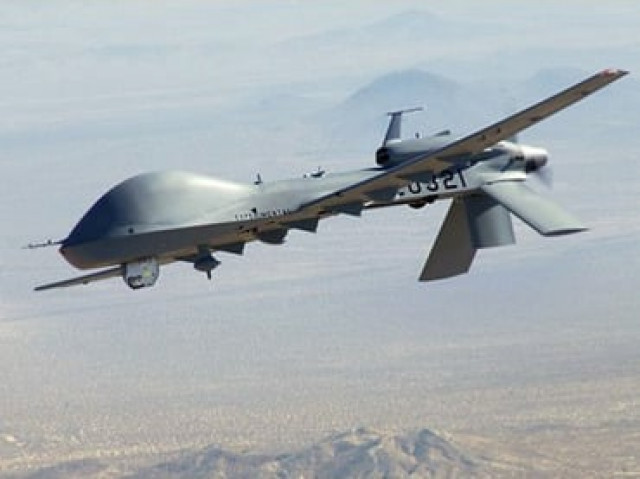Transparency on drone strikes
While the media reported on the high number of civilian casualties, authorities downplayed the incident.

US has said that it has cut back on the number of drone strikes in Pakistan. PHOTO: AFP/ FILE

We welcome this step because lower civilian casualties can only be a good thing, however, the question whether drone strikes should be allowed at all still remains. The matter, so far, has, of course, been quite muddled, with those in charge at home saying one thing and the US, something else altogether. According to a leaked government document, “Details of Attacks by Nato Forces/Predators in Fata”, Pakistan authorities were aware of the scores of civilians killed in drone strikes from 2006 to late 2009. Ninety-four of the 746 people killed were innocent children. A total of 174 civilians were killed. The report, damningly, shows that the numbers of civilian deaths quoted by the UN, leaked US intelligence documents, the US administration — that not more than 50-60 non-combatants have been killed over the years — and the media were all far less than the actual deaths in a number of attacks.
Citing a specific incident, the report talks about how in 2006, as many as 80 children were killed in a drone strike on a madrassa. While the media also reported on the high number of civilian casualties, regrettably, authorities downplayed the incident, calling the report exaggerated, thereby not even acknowledging the deaths of these precious children.
The matter is expected to be a key topic in the upcoming visit of Senator John Kerry. Hopefully, whatever agreement the powers that be finalise on drone strikes — the current government continues to maintain drone strikes are counterproductive and demand an end to them, while the US says armed drones will continue to patrol the border — will be transparent and the practice that follows will not be a violation of the country’s sovereignty.
Published in The Express Tribune, July 27th, 2013.
Like Opinion & Editorial on Facebook, follow @ETOpEd on Twitter to receive all updates on all our daily pieces.














COMMENTS
Comments are moderated and generally will be posted if they are on-topic and not abusive.
For more information, please see our Comments FAQ